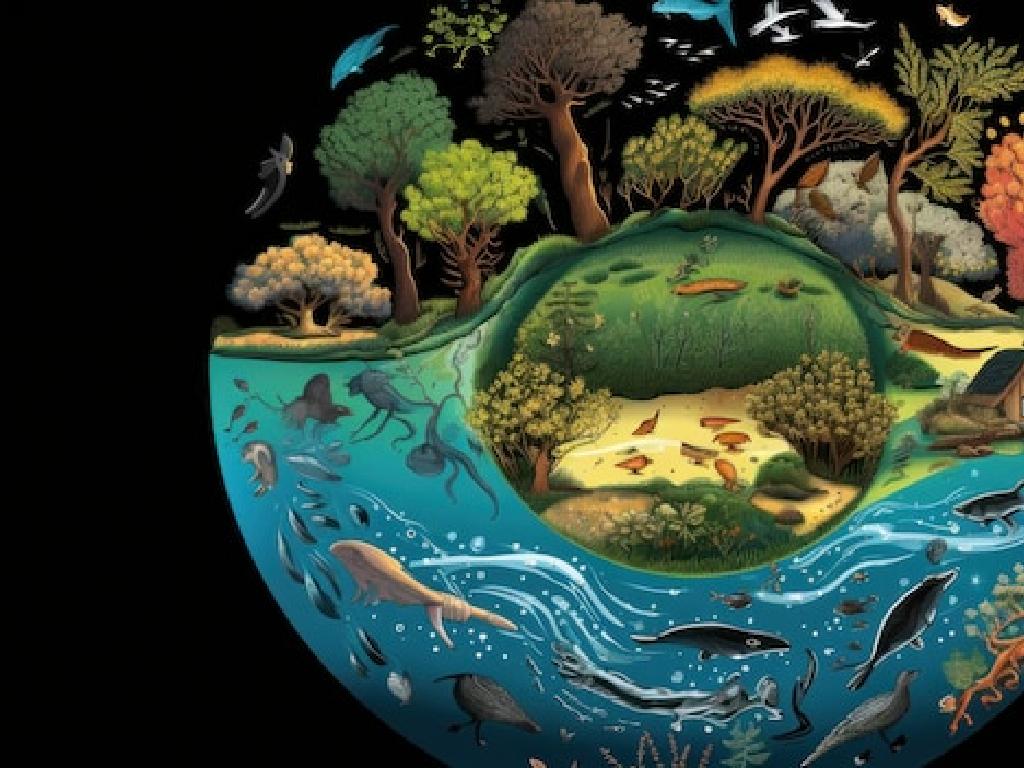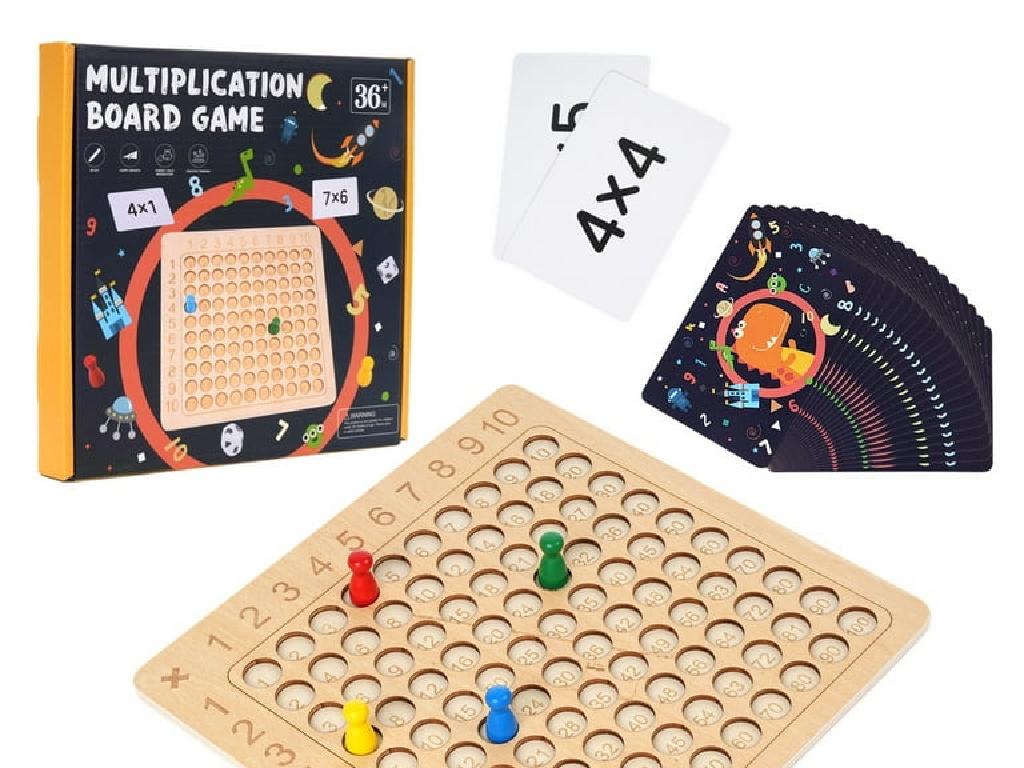How Can Animal Behaviors Affect Reproductive Success? Identify Evidence To Support A Claim
Subject: Science
Grade: Sixth grade
Topic: Adaptations And Natural Selection
Please LOG IN to download the presentation. Access is available to registered users only.
View More Content
Animal Behaviors & Reproductive Success
– Survival through adaptation
– Adaptations are traits that help animals survive in their environments.
– Behaviors influencing reproduction
– Certain behaviors can increase chances of mating and passing on genes.
– Evidence of behavior’s impact
– Look at studies showing how mating dances or nest building affects success.
– Today’s learning journey
|
This slide introduces the concept of how animal behaviors can influence reproductive success, a key component of natural selection. Adaptations are not just physical but also behavioral, and these behaviors can play a crucial role in an animal’s ability to reproduce and pass on its genes. Examples include elaborate mating rituals or aggressive behaviors that secure territory and resources. We will explore evidence from scientific studies that demonstrate the impact of specific behaviors on reproductive success. The learning objectives for today’s lesson are to understand these concepts and to identify real-world examples that support the claim that behavior can affect an animal’s reproductive success.
Understanding Adaptations
– Define biological adaptation
– Adaptation: a trait that helps an organism survive and reproduce
– Examples of adaptations
– Physical: thick fur in cold climates; Behavioral: birds migrating
– Adaptations’ role in survival
– Traits that improve survival chances in an environment
– Link to reproductive success
– Successful adaptations can lead to better mating opportunities
|
This slide introduces the concept of adaptation in the context of biology, emphasizing its importance for survival and reproductive success. Start by defining adaptation as a characteristic that enhances an organism’s ability to survive and reproduce in its environment. Provide examples of both physical adaptations, like the thick fur of polar bears for insulation, and behavioral adaptations, such as birds migrating to warmer areas during winter. Explain how these adaptations can improve an organism’s chances of survival, which in turn can affect their ability to reproduce and pass on their genes. Highlight that adaptations that lead to reproductive success are key to natural selection, as they are more likely to be passed on to future generations.
Natural Selection and Reproductive Success
– Darwin’s theory of natural selection
– Charles Darwin observed species adapt to survive and reproduce.
– Environment’s influence on selection
– Animals with favorable traits are more likely to survive in their environment.
– ‘Survival of the fittest’ explained
– The fittest are those who can survive, reproduce, and pass on their genes.
– Link to reproductive success
– Behaviors that improve survival often lead to better chances of reproduction.
|
This slide introduces the concept of natural selection as proposed by Charles Darwin, explaining how certain traits become more common in a population over time due to environmental pressures. It’s crucial to clarify that ‘survival of the fittest’ refers to an organism’s ability to survive and reproduce, not just physical strength. Discuss how animal behaviors, such as mating rituals or territorial defense, can affect an individual’s reproductive success and thus contribute to the natural selection process. Provide examples like peacocks with elaborate feathers or birds that sing complex songs to attract mates. Encourage students to think of other behaviors that might influence an animal’s chance to reproduce.
Animal Behaviors and Reproductive Success
– Understanding animal behaviors
Behaviors are actions animals take to interact with their environment.
– Innate vs. learned behaviors
Innate behaviors are instinctual, while learned behaviors are acquired through experience.
– Behaviors aiding survival
For example, migration for better climate or courtship dances to attract mates.
– Impact on reproductive success
Successful behaviors can lead to more offspring and spread of genes.
|
This slide introduces the concept of animal behaviors and their significance in the context of reproductive success. Students should understand that behaviors are the various actions animals take, which can be either innate (instinctual) or learned (acquired). Provide examples such as migration to avoid harsh climates or elaborate courtship rituals that help in attracting mates. Emphasize how these behaviors can increase the chances of survival and reproduction, thereby affecting the animal’s reproductive success. Discuss how successful traits are passed on to future generations, reinforcing the concepts of adaptations and natural selection.
Behaviors and Reproductive Success in Animals
– Impact of behaviors on reproduction
– Mating rituals and territory defense
– Rituals and defense attract mates and ensure offspring survival
– Parental care’s role
– Offspring care increases survival rate, affecting reproduction success
– Case study: Bowerbirds’ nests
– Male bowerbirds build intricate nests to attract females
|
This slide explores the connection between certain behaviors in animals and their success in reproducing. Behaviors such as mating rituals can attract potential mates, while defending territory can protect offspring. Parental care, such as feeding and protecting young, greatly increases their chances of survival. The case study of the Bowerbird, known for constructing elaborate and colorful nests to impress females, serves as a concrete example of how behavior can influence reproductive success. Students should understand that these behaviors are often a result of natural selection, where successful traits are passed down to future generations.
Evidence and Claims in Animal Behavior
– Understanding scientific claims
– A claim is a statement that something is true, like ‘Birds sing to attract mates.’
– How to gather supporting evidence
– Observe animal behaviors and record findings to support or refute a claim.
– Analyzing evidence for conclusions
– Look for patterns in data to make logical conclusions about animal behaviors.
– Impact on reproductive success
– Behaviors like mating dances can increase chances of finding a mate and reproducing.
|
This slide introduces the concept of scientific claims and the importance of evidence in supporting these claims, specifically in the context of animal behavior and reproductive success. A scientific claim is a statement about the natural world that can be tested and potentially proven true or false through evidence. Students should learn how to gather and analyze evidence, such as observing animal behaviors and recording their findings, to support or refute these claims. By analyzing this evidence, they can draw logical conclusions about how certain behaviors may affect an animal’s chances of reproduction. For example, elaborate mating dances or calls may increase an animal’s visibility to potential mates, thereby increasing reproductive success. Encourage students to think critically about the evidence they gather and how it supports their claims.
Class Activity: Animal Behaviors and Reproductive Success
– Observe animal behavior videos
– Identify behaviors impacting reproduction
– Look for mating rituals, care of young, etc.
– Make claims based on observations
– Support claims with evidence
– Use specific examples from the videos
|
In this activity, students will watch selected videos that showcase different animal behaviors. They should focus on behaviors that could influence the animals’ ability to reproduce and have offspring, such as mating dances, nest building, or caring for the young. After observation, students will make claims about how these behaviors may affect the animals’ reproductive success. They must back up their claims with evidence observed in the videos. For example, a student might claim that elaborate mating dances lead to a higher chance of attracting a mate, citing specific movements or sequences from the video. Teachers should prepare a diverse range of videos to ensure a broad understanding of the topic and provide guidance on how to form evidence-based claims.
Conclusion: Animal Behaviors & Reproductive Success
– Recap of today’s key concepts
– Significance of behavior in natural selection
– Behaviors can improve survival and chances of mating
– Engage in class discussion
– Share observations and evidence
– Discuss how specific behaviors may lead to successful reproduction
|
As we conclude today’s lesson, it’s crucial to review the key concepts we’ve covered about animal behaviors and their impact on reproductive success. Understanding these behaviors is essential because they can directly influence an animal’s ability to survive and reproduce, which is the core of natural selection. Encourage students to participate in a class discussion, sharing their observations and the evidence they’ve gathered to support their claims. This reflection will help solidify their understanding and allow them to appreciate the complexities of animal behaviors in the context of natural selection.
Homework: Animal Behaviors and Reproductive Success
– Research an animal behavior
– Link behavior to reproductive success
– Does the behavior attract mates or protect offspring?
– Gather evidence for your claim
– Use reliable sources to support your findings
– Get ready to present your findings
|
This homework assignment encourages students to explore the relationship between animal behavior and reproductive success as part of their study on adaptations and natural selection. Students should choose an animal, identify a specific behavior, and research how this behavior may increase the chances of mating or the survival of offspring. They should look for evidence in books, reputable websites, or scientific articles to support their claim. In the next class, students will present their findings, which will help them develop research and presentation skills while reinforcing the concepts of natural selection and animal behavior.






